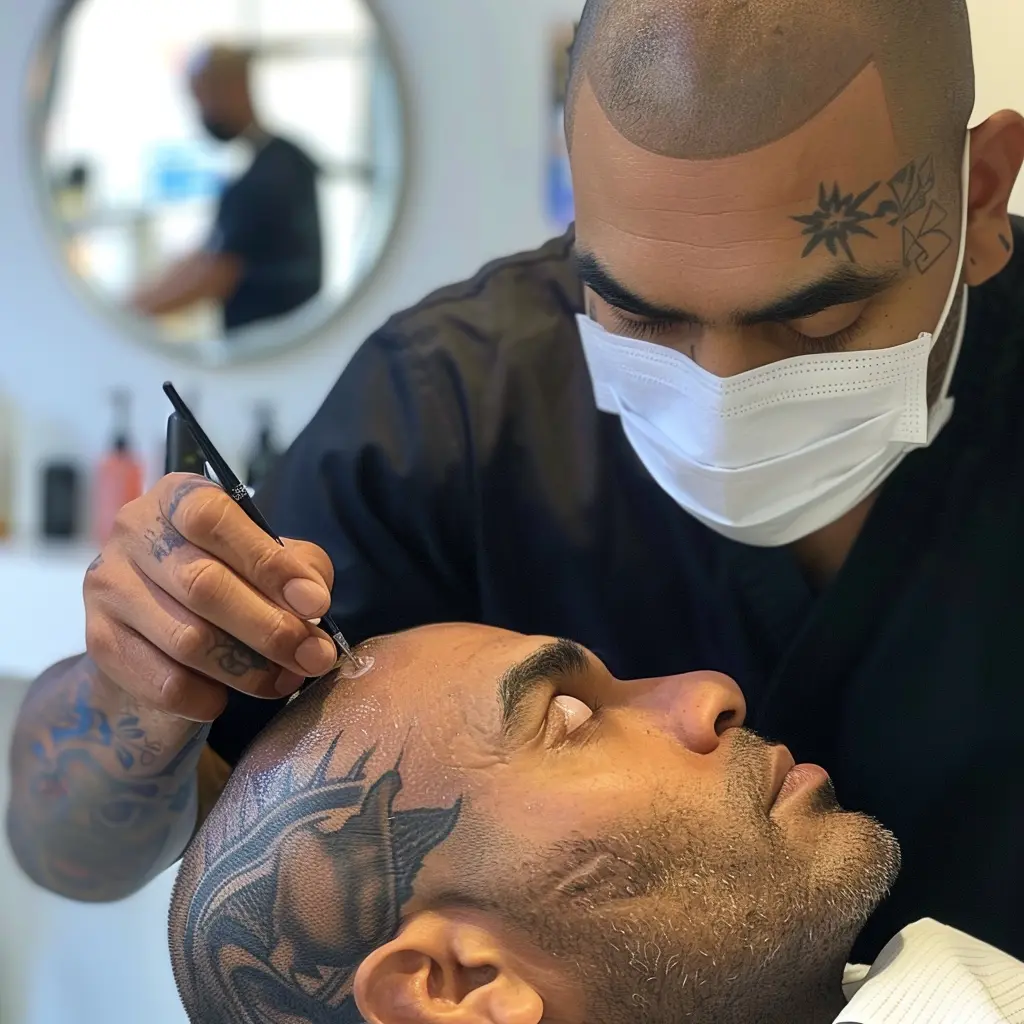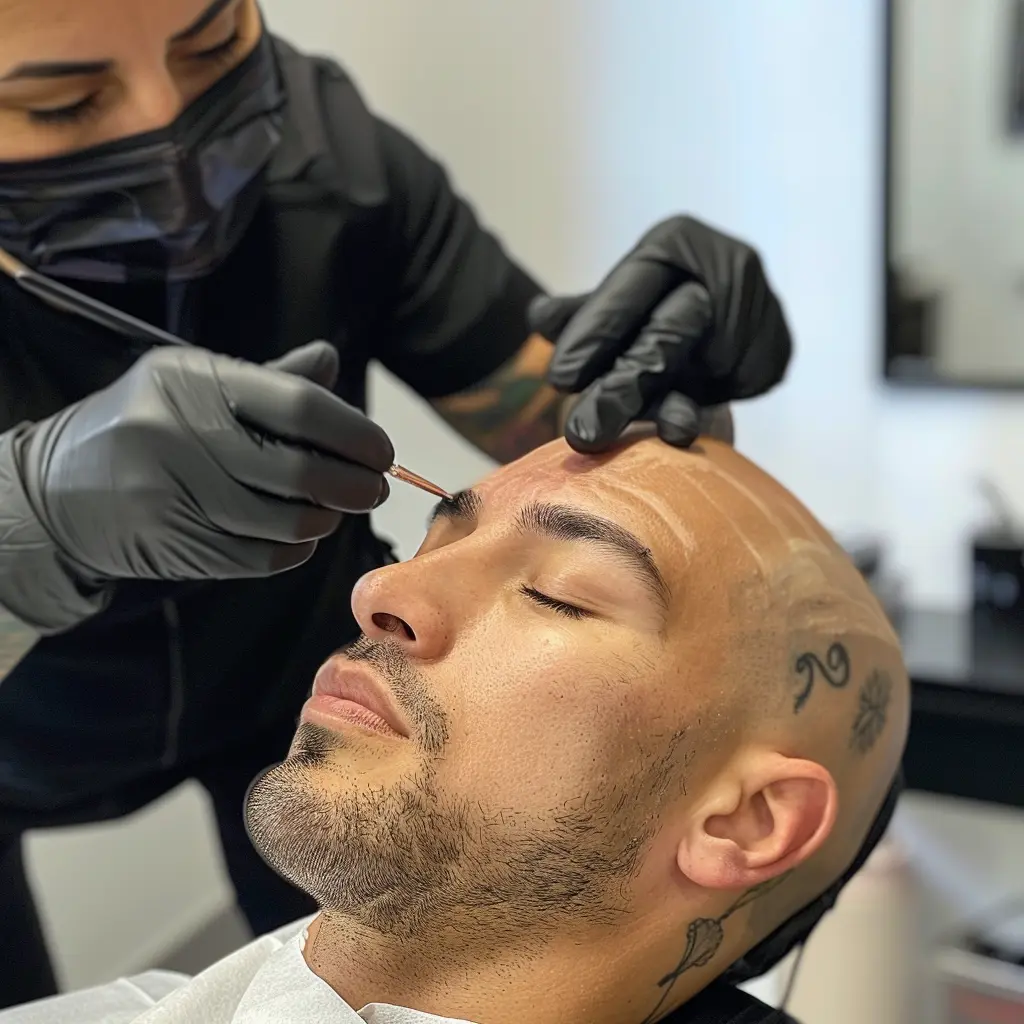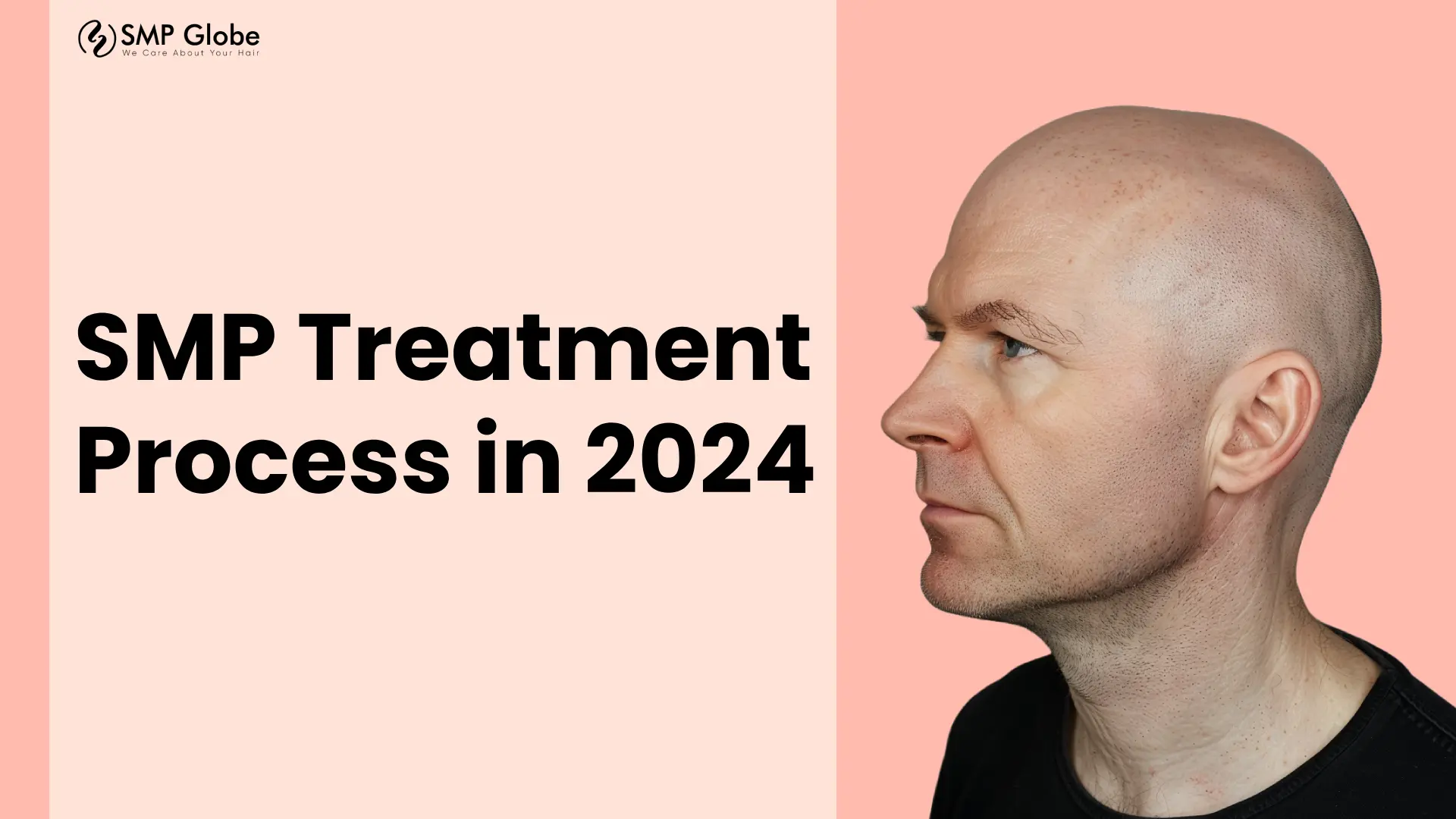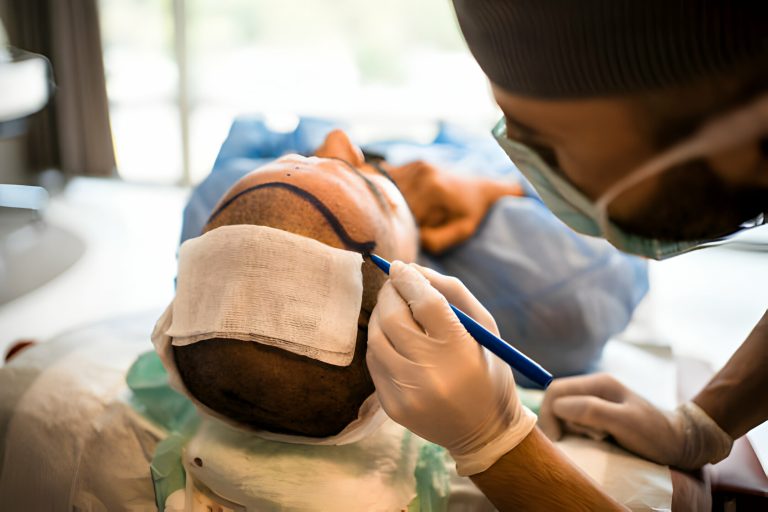Scalp Micropigmentation (SMP) is a highly effective, non-surgical solution for addressing hair loss. This innovative treatment involves depositing specialized pigments into the scalp to replicate the appearance of natural hair follicles.

Whether dealing with male pattern baldness, female pattern baldness, alopecia, or scarring from hair transplants, SMP offers a versatile and lasting solution.
This article delves deeply into the SMP treatment process, using key entities to ensure a thorough understanding.
Introduction to Scalp Micropigmentation
Scalp Micropigmentation (SMP) is a cosmetic procedure designed to create the illusion of fuller hair by placing tiny pigment dots on the scalp.
This treatment is effective for various forms of hair loss, including male pattern baldness, female pattern baldness, and alopecia. SMP is also utilized to camouflage scars from hair transplants and other scalp injuries.

Unlike traditional tattoos, SMP employs pigments that are specifically formulated to blend seamlessly with the client’s natural hair color and skin tone, providing a realistic appearance.
The SMP Treatment Process
Now let’s talk about the SMP Treatment Process, which is very smooth but in different steps.
Initial Consultation
The SMP treatment process begins with an initial consultation where the practitioner evaluates the client’s scalp condition, hair loss pattern, and skin type.

During this session, the client’s expectations and desired outcomes are discussed in detail. The practitioner also explains the SMP procedure, potential side effects, and aftercare requirements.
This consultation is crucial for developing a personalized treatment plan tailored to the client’s specific needs.
Designing the Hairline
Creating a natural-looking hairline is a critical component of SMP. The practitioner collaborates with the client to design a hairline that complements their facial features, age, and personal preferences.
Factors such as the client’s original hairline, the shape of their face, and their style goals are considered. A well-designed hairline can significantly enhance the client’s overall appearance and confidence.

Color Matching
Color matching is essential to ensure the pigments blend seamlessly with the client’s existing hair and skin tone.
The practitioner selects pigment shades that match the client’s natural hair color and skin undertone.
This step is vital for achieving a realistic and natural look. Often, multiple pigment shades are used to create depth and dimension, enhancing the overall effect.
Preparing for the Procedure
Before the SMP procedure begins, the client’s scalp is thoroughly cleaned to remove any oils or residues that could interfere with pigment application.

The practitioner may also apply a topical anesthetic to minimize discomfort during the treatment.
Clients are advised to follow any pre-procedure guidelines provided by the practitioner to ensure optimal results.
The SMP Procedure
The SMP procedure involves using a fine needle to deposit specialized pigments into the upper dermis layer of the scalp.
The practitioner carefully places each microdot to replicate the appearance of natural hair follicles.
This process is repeated across the treatment area, creating a dense and natural-looking effect. Depending on the extent of the hair loss and the desired density, multiple sessions may be required.
SMP Treatment Steps
- Session Preparation: The practitioner reviews the design and color match with the client before starting the procedure.
- Pigment Application: Using a micro-needle, the practitioner deposits tiny dots of pigment into the scalp, ensuring even coverage.
- Layering Technique: Multiple layers of pigments are applied to build up the desired density and depth, ensuring a natural gradient effect.
- Session Completion: Each session lasts between 2 to 4 hours, depending on the size of the treatment area. The practitioner provides immediate post-procedure care instructions.

Pain Management During SMP
While SMP is generally well-tolerated, some clients may experience discomfort during the procedure.
Practitioners often use topical anesthetics to numb the scalp and reduce pain. Additionally, clients can take breaks during the sessions if needed.
Open communication with the practitioner about pain levels is important for ensuring a comfortable experience.
Aftercare and Healing Process
Proper aftercare is essential for achieving the best results from SMP. Clients are typically advised to avoid washing their scalp for the first few days after the procedure.

They should also avoid activities that cause excessive sweating, such as intense exercise, and exposure to direct sunlight.
The scalp may appear red and slightly swollen immediately after the procedure, but these symptoms usually subside within a few days.
SMP Aftercare Guidelines
- Keep the scalp dry: Avoid washing the scalp or exposing it to water for the first 3-4 days.
- Avoid strenuous activities: Refrain from activities that cause sweating, such as exercise or saunas, for at least one week.
- Protect from sun exposure: Wear a hat or apply a high-SPF sunscreen to protect the scalp from UV rays.
- Use gentle products: Once washing is allowed, use a mild, fragrance-free shampoo to clean the scalp.
- Avoid picking or scratching: It’s important to avoid picking at any scabs that form, as this can affect the healing process and pigment retention.
Follow-Up and Maintenance Sessions
SMP is designed to be long-lasting, but maintenance sessions may be required to keep the pigments looking fresh.
These touch-up sessions typically occur every 3-5 years, depending on the client’s skin type, lifestyle, and exposure to sunlight.
Regular follow-ups with the practitioner can help address any fading or pigment changes over time.
Potential Risks and Side Effects
As with any cosmetic procedure, there are potential risks and side effects associated with SMP. Common side effects include redness, swelling, and itching, which typically resolve within a few days.
More serious risks, such as infections or allergic reactions, are rare but possible. It is crucial for clients to choose a certified and experienced practitioner to minimize these risks.
Adhering to aftercare instructions also plays a significant role in reducing potential complications.
Scalp Micropigmentation (SMP) offers a highly effective and non-surgical solution for individuals experiencing hair loss.
By understanding the SMP treatment process, from the initial consultation to the final touch-up session, clients can make informed decisions and achieve a natural-looking, confidence-boosting outcome.
Whether addressing male pattern baldness, alopecia, or hair transplant scars, SMP provides a versatile and enduring solution that enhances appearance and self-esteem.
By delving into the details of the SMP treatment process, we have covered essential aspects that ensure a comprehensive understanding of this innovative procedure.
This guide provides foundational knowledge needed to appreciate the transformative potential of scalp micropigmentation.


![What is SMP? [Scalp Micropigmentation Treatment]](https://smpglobe.com/wp-content/uploads/2024/05/smp-clinic-best-for-treatment-in-australia.jpeg)
![How Long Does Scalp Micropigmentation Take? [Total Time]](https://smpglobe.com/wp-content/uploads/2024/02/How-Long-Does-SMP-Treatment-Take-768x512.jpg)